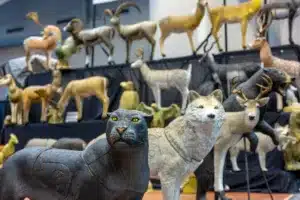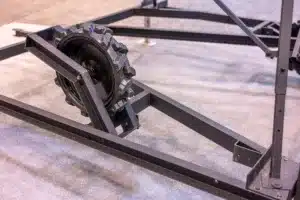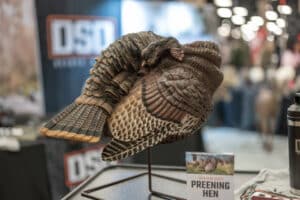No products in the cart.

365 Archery 3D Archery Targets
When folks enter a new industry, or even a new subsection of their industry, they usually dip their toe in by offering one or two

Let’s discuss two of the most effective tools that most whitetail hunters overlook or disregard… Aerial Photos and Topography (Topo) Maps and what to look for in each. These two tools (Aerial/Topo Map) can and will become your top two weapons in your arsenal for hunting whitetails in the future. Whether it be on ground you currently hunt or new ground that you will be hunting in the future. Once you understand the key features and how to interpret each map, your on-stand whitetail sightings will increase.
Part ONE: Aerial Photos
Where do you start?
My number one resource for aerial photos is Google Earth , if you do not have this already installed on your computer, Do it now! This is a very useful tool that can assist in a variety of ways to help you hunt whitetails smarter and more efficient. Another great tool is Mapping the Outdoors, both it and Google Earth can take you to any location that you are hunting or planning to hunt and provide you with up-to-date imagery of the whole area. A future blog will discuss and give tips on how to utilize different layers of Google Earth in helping find public hunting ground across the USA, along with searching for a states individual county GIS system for aerial photos and property boundaries.
What do you look for?
What are the key features to look for in Aerial Photos? Cover/Bedding Areas – Inside Corners – Natural Funnels – Trails and Transition/Break Lines are the key aspects I look for, when viewing an aerial photo of my hunting location. Some of these features may be hard to see at first, but after this article you will know what to look for and they will soon begin to become more visible.
Let’s start with Bedding, Natural Funnels and Inside Corners. These are the three top features I look for on each aerial photo. Now lets slow down and give a description of each feature and some key examples of what to look for.
First up is Bedding and possibly the hardest feature to visual see on an aerial photo. What to Look for: In aerial photos of timber, you may notice an area that looks slight denser then that of the other timber in the photo.
Normally, these are areas of thicker under brush and areas that provide good cover and bedding for whitetails. Bedding areas become real hot spots for mature bucks in the pre-rut and the actual rut itself, when bucks are out scent checking for a hot doe. Refer to the example below to help you identify these on aerial photos.

Next up is Natural funnels or pinch points that whitetails will be lead to travel, based on certain geographic features.
These funnels are excellent stand site locations for whitetail bowhunters. They provide the hunters the opportunity of close encounters and allowing for a greater chance of successes. What to Look for: Funnels are easily seen with a aerial photo…
Natural Funnel: A funnel is a small area or narrowing of timber between two different standing timber lots or strip of woods alongside a creek or river and dividing fields.
Inside corners are the next feature that I look for on each aerial photo. I have experienced that inside corners are the most productive areas to catch cruising bucks.
Whitetails natural routes of travel tend to keep them just inside the woodline for cover, but allowing them to check the open fields or crops for a suseptable doe or predators.Along with staying covered on inside corner trails, this also provides the shortest distance between blocks of timber.
Inside Corner:

Now lets move onto Transition/Break lines and trails, all of which can easily be seen with Google Earth and most any other aerial imagery that is up-to-date.
Transition/Break Lines: Area that changes over from one habitat surrounding to another.

Trails are easy to spot and pretty self explanatory. But refere to the pictures below to help explain and give visual aid to what to look for on an aerial map.


As the title indicated, this is a two part article on Aerial Photos and Topo Maps and they literally go hand in hand. Neither one can truly stand alone, but when used together they make for your number one key to success.
So study the key features of Aerial Photos and be on the look out for the Topo blog.
UPDATE: Click here for PART TWO covering Topo maps!
Be sure to go over and like us on Facebook at SELFILMED.

When folks enter a new industry, or even a new subsection of their industry, they usually dip their toe in by offering one or two

Highlights of Greylight’s new releases for 2024 – the Daybreak Blind, Transformer Tower, and Nomad trailer.

With one of their coolest decoys to date, the NWTF floor was buzzing with talk of the new DSD Preening Hen decoy. It’s almost TOO
Don’t miss a thing! Subscribe below to keep informed on everything that’s happening with the folks at SELFILMED.com